By Alice Doyel
Volunteer blogger
 A Story to Enjoy Reading and to Share With Your Family
A Story to Enjoy Reading and to Share With Your Family
 “I believe that a girl should not do what she thinks she should do but should find out through experience what she wants to do.”
“I believe that a girl should not do what she thinks she should do but should find out through experience what she wants to do.”
– Amelia Earhart
After high school, Amelia attended a girl’s finishing school. She left in the middle of her second year to work as a nurse’s aide in a Canadian military hospital during WWI. After that Amelia attended college. She became a social worker at a Boston settlement house. Earhart took her first flying lesson in 1921. She saved enough money in six months to buy her first plane. The second-hand Kinner Airster was a bright yellow two-seater biplane she named The Canary. She flew it to set her first women’s record, flying at 14,000 feet.
https://ameliaearhart.com/index.php/biography/ for more about Amelia Earhart’s amazing life.
Setting the Stage: When Nazi troops invaded the Soviet Union during WWII, they massacred and brutalized soldiers and civilians alike. Nearly one million Soviet women took up arms to serve on the front lines as anti-aircraft gunners, snipers, partisan guerrillas, and fighter pilots. Female troops were reputed as some of the fiercest fighters against the German Army on the Eastern Front, often signing up for highly hazardous combat positions. Amelia Earhart, with her record-breaking flights, inspired the Russian women pilots, one of them being Marina Raskova. https://www.history.com/news/8-things-you-should-know-about-wwiis-eastern-front
The Story of Marina Raskova and The Night Witches
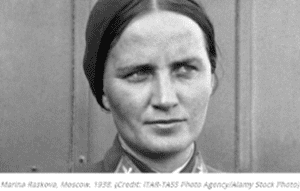 Marina Raskova’s early education was in classical music. She sang opera and was a classically trained pianist. However, an ear infection left her hearing-impaired and unable to pursue a music career. Her father died from a motorcycle accident while Marina was still in school. She decided to study chemistry and engineering in high school, after which she worked as a chemist in a dye factory to help support her family. Then Marina worked as a draftswoman at the Aero Navigation Laboratory of the Air Force Academy. That led to Marina becoming both a pilot and a navigator. At age 21, she was the first woman to become a navigator in the Soviet Air Force. A year later, she started teaching at the Zhukovsky Air Academy, also a first for a woman. The Academy sent Marina to the Central Flying Club to receive further flying lessons. She then taught command personnel advanced navigation.
Marina Raskova’s early education was in classical music. She sang opera and was a classically trained pianist. However, an ear infection left her hearing-impaired and unable to pursue a music career. Her father died from a motorcycle accident while Marina was still in school. She decided to study chemistry and engineering in high school, after which she worked as a chemist in a dye factory to help support her family. Then Marina worked as a draftswoman at the Aero Navigation Laboratory of the Air Force Academy. That led to Marina becoming both a pilot and a navigator. At age 21, she was the first woman to become a navigator in the Soviet Air Force. A year later, she started teaching at the Zhukovsky Air Academy, also a first for a woman. The Academy sent Marina to the Central Flying Club to receive further flying lessons. She then taught command personnel advanced navigation.
Marina and two other young women attempted to achieve the longest distance flight by a women’s airplane crew. After considerable distance was covered, a red light blinked indicating they were running out of fuel. Extreme cold knocked out their radio. Being the navigator, Marina is in the front of a three-compartment plane, the riskiest position if they crashed. The pilot decided they must parachute quickly. She sends a handwritten note to Marina through a pneumatic tube mechanism saying, “Jump!”
Marina ends up alone in the cold wilderness for ten days with just a little chocolate for food. Her only hope of survival is finding her way back to the downed plane, and that someone will spot it and come to their rescue. Fortunately, Marina is a navigator. She notes the plane’s direction as she floats down on her parachute. As she lands, Marina hears gunshots fired by her crewmates. They survived! They managed to land the plane in a half-frozen swamp, where they were signaling their location. Marina figures out the direction on her compass and sets off towards them. Marina survives on berries, mushrooms, and birch leaves. Her legs are hurting. She injured them when she hit the ground. She’s cold, weak, and thirsty. But finally, Marina looks out over the swampland and sees the plane. She is reunited with the other women who have survived their own ordeal. The trio is found and rescued.
It was determined that the three women had flown far enough before the plane crashed to break the long-distance record. They returned to Moscow on a train, being greeted as heroes along the way.
There is a fancy reception for the women at the Kremlin. They are awarded the title Heroes of the Soviet Union, the first women to get that award. As one government official puts it, “You have demonstrated what great things Soviet women are fitted for.” Marina later set more long-distance flying records, giving her celebrity status in the Soviet Union.
It is now World War II. The Nazi invasion had wiped out much of the Soviet Air Force. More pilots were needed to defend the “Motherland.” Stalin conceded to Marina and the other women who were demonstrating for the opportunity to become combat pilots.
Marina had put out a call to women to join the war effort and fight for peace. Thousands of mostly young women applied, and hundreds of them were accepted.
Still in her twenties, Marina is recruited to train female Air Force pilots to fight on the frontlines of World War II. One of the regiments, 588, will be among the highest performing units in the entire Soviet Air Force.
To reach the training facility in the countryside, the woman trainees traveled in rickety old trucks. The training facility was designed only for men, so the women were put in a barn that “stunk to high heaven.” They cleaned up the barn and made it their home. The women were given men’s uniforms and large men’s boots.
Training is packed into 14-hour days because the women have less than six months to learn everything – navigation, airplane mechanics, how to drop bombs and shoot guns, and how to calculate the distance to a target. The women also had to learn how to deal with the male soldiers, who bullied them and even substituted water for the women’s gasoline.
Marina trained and guided the women through these challenging times. She even secured a piano, and she would play classical music to help calm them in the evening.
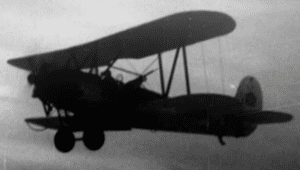 Their planes were from World War I, Po-2’s, used mainly as crop dusters by farmers to fly low and slow over their fields. Imagine a canvas-covered plywood box with a couple of canvas-covered wings and a lawnmower-type engine with a propeller on it. These planes are open to the elements. They do not have a radio. They can only hold the weight of the pilot, navigator, and bombs – no room for parachutes. They flew so low to the ground that a parachute would not have opened anyway. If a fire spark hit a plane, it burned up quickly.
Their planes were from World War I, Po-2’s, used mainly as crop dusters by farmers to fly low and slow over their fields. Imagine a canvas-covered plywood box with a couple of canvas-covered wings and a lawnmower-type engine with a propeller on it. These planes are open to the elements. They do not have a radio. They can only hold the weight of the pilot, navigator, and bombs – no room for parachutes. They flew so low to the ground that a parachute would not have opened anyway. If a fire spark hit a plane, it burned up quickly.
As the training goes on, the women are split into three separate regiments. Two of those regiments, the 586 and 587, eventually include some men. Marina led the 587.
But the 588 was completely a women’s regiment: pilots, co-pilots, navigators, mechanics, and ground crew. The 588 was led by Yevdokiya Bershanskaya, a 28-year-old woman with 10 years of experience as a commercial pilot.
The 588 Regiment had a specific military strategy of dropping bombs on the Nazis at night, which took special skills. Besides flying the planes in the dark, they had to refuel them and fix them in the dark. If they had any light at all, it was from the moon.
Their first target was a Nazi regiment headed for Stalingrad. The regiment headquarters was in a railway station. The planes approached their target, flying through the night at about 3000 feet. As they got close to the target, they cut their engines. They dropped down silently, gliding to 100 feet. When the first bomb is dropped, the Nazis were caught totally off guard.
The Nazis raced to their searchlights and their anti-aircraft guns. But shooting at these night attackers is difficult, partly because they’re flying so slowly that Nazis assume they’re flying much faster. Therefore, they aim too far in front of the planes and miss. The first and third planes make it through the fire. But the second is hit by the guns. In two nights, the 588 Regiment flew 46 missions and pretty much wiped out that entire Nazi regiment, including their supplies, food, and fuel.
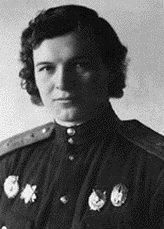 Yevdokiya Bershanskaya created a time-effective process to service the planes and quickly get them flying again, similar to NASCAR pit stops. The all-women 588 Regiment was hell-bent on proving themselves, even eating their meals in the cockpits, and not taking breaks like their male counterparts.
Yevdokiya Bershanskaya created a time-effective process to service the planes and quickly get them flying again, similar to NASCAR pit stops. The all-women 588 Regiment was hell-bent on proving themselves, even eating their meals in the cockpits, and not taking breaks like their male counterparts.
The barrage of night attacks by the 588 Regiment paid off, taking a huge psychological toll on the Nazis. These raids were making the Nazi soldiers’ lives a living hell. They had to stay up all night just waiting to be attacked. They couldn’t use any light at all. No cooking fires, no cigarettes. Then the Soviet Union government dropped propaganda materials mocking the Nazis, saying “You should know that those who are bombing you and forcing you to run and hide are women.”
The scariest moment for the Nazis wasn’t hearing the planes approach. It was hearing them fall silent when they were about to glide in and drop the bombs. The planes were devilishly difficult to shoot down. In shooting they would give away their position and become vulnerable to a bomb.
Some Nazi soldiers thought that the women were taking special injections to improve their night vision. They also wondered, how small are those Russian aircraft? Nazi soldiers suggested that maybe they are witches flying on brooms. And so, the expression “Night Witches” was coined.
By the spring of 1943, the Soviets have pushed the Nazis back. But the Nazis are still in control of an important territory, the Taman Peninsula, which gave the Nazis land access to an area rich in oil. The Night Witches are part of a six-month struggle to get that area of land back.
The Night Witches flew missions every night, bombing Nazi headquarters, airfields, ammunition stores, convoys, and troop concentrations. Even when the Nazis managed a way to shoot down some of the planes, the Night Witches kept fighting. These women were handpicked, the best of the best, and they were tough!
After the Taman Peninsula is liberated in September of 1943, the Night Witches earned the honorary name of “Tamansky” in recognition of their important contribution.
By the time the war ends in May of 1945, the Night Witches have flown more than 24,000 missions. Some individual women flew over 1,000 missions.
The 588 Regiment was one of the highest performing regiments in the whole Soviet Air Force. In keeping the Nazis on edge 24/7, they clearly contributed to the victory over the Nazis.
At the end of the war, 18 pilots and 6 navigators from the 588 Regiment received the highest military honor, the title “Hero of the Soviet Union.”
The saddest experience for the three women’s regiments was the death of Marina Raskova in January 1943, at age 31. She was flying to Stalingrad with four others from the 587 Regiment. They hit dense fog and the plane crashed into a cliff, killing all of them. The whole country mourned Marina. She was a hero to everyone and a role model for young Soviet girls. Marina was given the first state funeral of the war, with thousands of people in attendance.
With the war over, the women flyers returned to civilian society because all women were dismissed from the military. Many women wanted to keep flying, but they had a hard time getting hired. Many of the women flyers remained haunted by their wartime service. They had recurring nightmares. The most common nightmare was that they were flying and burning in the air. It had happened to women in their regiments. Imagine for yourself flying hundreds of flights, each time wondering “Will I burn and die tonight?”
To Learn More, Check Out These Links:
The Night Witches: The German Troops Calling Them “Die Nachthexen!” (33 min, 44 sec)
Podcast by HISTORY This Week (October 4, 2021)
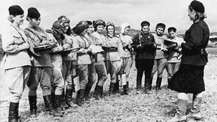 The Atlantic
The Atlantic
“Night Witches: The Female Fighter Pilots of World War II Members of the 588th Night Bomber Regiment decorated their planes with flowers … and dropped 23,000 tons of bombs.” By Magen Garber (07/15/2014)
History.com
“Meet the Night Witches, the Daring Female Pilots Who Bombed Nazis By Night… They were a crucial Soviet asset to winning World War II.” By Brynn Holland (07/07/2017) Updated (06/07/2019)
Wikipedia
Marina Raskova
 “Night Witches” Oct 15, 2014, (31 million views)
“Night Witches” Oct 15, 2014, (31 million views)
Written Joakim Broden & Paer Sundstrom, Sung by Sabaton, Heroes Album (Bonus Version) (3 min, 13 sec)
Sabaton is a Swedish Heavy Metal Band. For lyrics that tell the Night Witches story, watch the video’s first 2 min, 20 sec. If this is not your music style, you can turn the volume down. You can read the lyrics at the bottom of this blog post, but that is less effective.
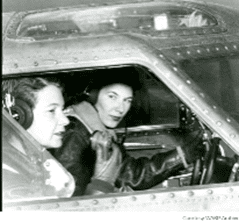 Learn About US Women Pilots in WWII: “Female WWII Pilots to be Honored with a Float in Rose Parade.” Women Airforce Service Pilots, “WASP.” The 25,000 girls and women who applied saw Amelia Earhart as a role model. 1,100 were selected to serve, flying over 60 million miles. They ferried bombers, transports, and trainer aircraft. They flew weather flights, transported top military brass around the country, test piloted planes, and towed targets so male pilots could practice shooting them.
Learn About US Women Pilots in WWII: “Female WWII Pilots to be Honored with a Float in Rose Parade.” Women Airforce Service Pilots, “WASP.” The 25,000 girls and women who applied saw Amelia Earhart as a role model. 1,100 were selected to serve, flying over 60 million miles. They ferried bombers, transports, and trainer aircraft. They flew weather flights, transported top military brass around the country, test piloted planes, and towed targets so male pilots could practice shooting them.
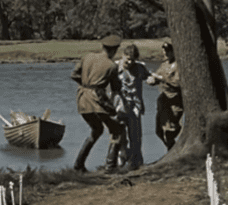 Ending on a light note: Clip from Heavenly Slug (Russian: Небесный тихоход,) a 1945 Soviet comedy film. The setting is a park by a river. A pilot’s comrades are walking him home, but they are all drunk and singing a famous Russian WWII pilot song.
Ending on a light note: Clip from Heavenly Slug (Russian: Небесный тихоход,) a 1945 Soviet comedy film. The setting is a park by a river. A pilot’s comrades are walking him home, but they are all drunk and singing a famous Russian WWII pilot song.
Think Pre-Monty Python! (2min, 28 sec)
Next Blog Post: The Strength of BIPOC Women – The Potential for BIPOC Girls
Lyrics: Night Witches
From the depths of hell in silence
Cast their spells, explosive violence
Russian nighttime flight perfected
Flawless vision, undetected
Pushing on and on, their planes are going strong
Air Force number one
Somewhere down below they’re looking for the foe
Bomber’s on the run
You can’t hide, you can’t move, just abide
Their attack’s been proved (raiders in the dark)
Silent through the night the witches join the fight
Never miss their mark
Canvas wings of death
Prepare to meet your fate
Night Bomber Regiment
588
Undetected, unexpected
Wings of glory
Tell their story
Aviation, deviation
Undetected
Stealth perfected
Foes are losing ground, retreating to the sound
Death is in the air
Suddenly appears, confirming all your fears
Strike from witches lair
Target found, come around, barrels sound
From the battleground (axis aiming high)
Rodina awaits, defeat them at the gates
Live to fight and fly
Canvas wings of death
Prepare to meet your fate
Night Bomber Regiment
588
Undetected, unexpected
Wings of glory
Tell their story
Aviation, deviation
Undetected
Stealth perfected
Beneath the starlight of the heavens
Unlikely heroes in the skies (witches to attack, witches coming back)
As they appear on the horizon
The wind will whisper when the night witches come
Undetected, unexpected
Wings of glory
Tell their story
Aviation, deviation
Undetected
Stealth perfected
From the depths of hell in silence
Cast their spells, explosive violence
Russian nighttime flight perfected
Flawless vision, undetected
 A Story to Enjoy Reading and to Share With Your Family
A Story to Enjoy Reading and to Share With Your Family